Site Search
Displaying results 151 - 160 of 345
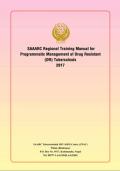
Resource | Guidelines,
SAARC Regional Training Manual on Programmatic Management of Drug Resistant TB (PMDT)” is a tool to facilitate SAARC Regional Training of Trainers on Management of Drug Resistant TB in SAARC region. This manual is prepared based on the Guidelines developed by Second Workshop to Develop Regional Guidelines for Treatment of MDR-TB and Third Meeting of Lab Directors from Reference Laboratories in SAARC Region held in Bhutan in 2007.
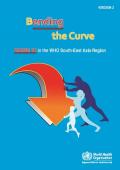
Resource | Publications,
Tuberculosis (TB) remains the largest cause of death and suffering due to any communicable disease among the most productive groups in the World Health Organization’s South-East Asia Region. Nearly half of global TB cases emerge in this Region, which is home to one fourth of the total population. It is estimated that TB and TB-HIV co-infection caused 3 deaths every 2 minutes in the Region in 2015. These deaths were entirely preventable with proper treatment of all TB patients, including those infected with drug-resistant strains.
The WHO End TB strategy and corresponding Regional Strategic Plan to end TB targets reductions to the extent of 90% in deaths, and 80% in TB incidence by 2030. This is in alignment with the Sustainable Development Goals (SDGs) to which all countries have committed.
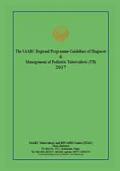
Resource | Guidelines,
The World Health Organization (WHO) estimates that childhood TB accounts for 6% to 10% of all TB cases worldwide each year. In countries with a high rate of TB disease, children account for as much as 40% of all new TB cases.
In 2014, there were an estimated 3.1 million incident cases of TB in the SAARC Region, equivalent to 185 cases per 100000 populations and estimated deaths due to TB was 0.37 million. This carries 32% of the global burden of TB incidence. Four of the eight Member Countries in the Region are among the 22 high burden countries, with India accounting for 23 % of the world’s TB cases. Among 3.1 million incident TB cases, 2.1 million are notified new and relapse cases. Published data about the epidemiology of TB in children is scarce in SAARC Region, though it is considered one of the most common causes of childhood morbidity.
The guideline focuses on being able to provide guidance in child TB to health workers working at the primary or secondary level.
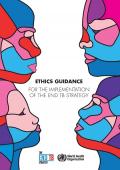
Resource | Guidelines,
The World Health Organization End TB Strategy is fully aligned with the framework of the Sustainable Development Goals (SDGs). Both require due attention to equity, human rights and ethics. In fact, “protecting human rights, ethics and equity” is one of the four key principles of the WHO End TB Strategy. The SDG agenda itself is inspired by a simple motto: “Leave no one behind”. Ensuring that these essential principles guide the implementation of the End TB Strategy is a must, especially when tuberculosis (TB) is rampant among the most vulnerable and marginalized populations everywhere in the world.
The goal of this guidance document is to assist those working towards ending TB in the 21st century by proposing practical answers to key ethical questions and enabling patients, families, civil society, health workers and policy makers to move forward and address current challenges. This TB ethics guidance can then inform difficult decision-making processes by providing recommendations and serving as a basis for further analysis of complex ethical challenges.

Resource | Presentations,
The WHO Global Ministerial Conference “Ending TB in the Sustainable Development Era: A Multisectoral Response” aims to accelerate country implementation of the WHO End TB Strategy in order to reach the End TB targets set by the World Health Assembly and the United Nations (UN) Sustainable Development Goals (SDGs). The Ministerial Conference will inform the UN General Assembly High-Level Meeting on TB in 2018.
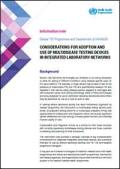
Resource | Publications,
In settings where laboratory testing has been traditionally organized by disease programme, the introduction of multidisease testing devices (also known as polyvalent testing platforms or multianalyte analysers) brings new opportunities for collaboration and integration, which can provide significant system efficiencies and cost savings, increase patient access, and ultimately improve quality of care.
Collaboration and integration should be a priority for both those countries with currently operational multidisease testing devices and those countries considering and planning for their introduction.
This information note provides a strategic overview of key implementation considerations for diagnostic integration using these devices, and is primarily intended for use by national laboratory services and TB, HIV, and hepatitis programme managers.
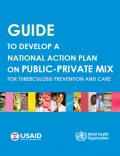
Resource | Tools,
This new document – the guide to develop a national TB PPM action plan – is a planning document designed to facilitate the integration of strong PPM components into national TB strategic plans that are supposed to be the basis for Global Fund proposals and national budgeting processes, and will help drive a more comprehensive approach to provider engagement in TB care and prevention.
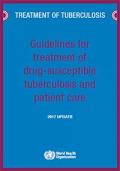
Resource | Guidelines,
The update of the Guidelines for treatment of drug-susceptible tuberculosis and patient care is important in the context of the End TB Strategy, which recommends treatment and patient support for all people with TB. This update by WHO aims to use the best available evidence on the treatment of drug-susceptible TB and interventions to ensure adequate patient care and support in order to inform policy decisions made in these technical areas by national TB control programme managers, national policy-makers and medical practitioners in a variety of geographical, economic and social settings.
The objectives of the updated Guidelines for treatment of drug-susceptible tuberculosis and patient care are:
1) to provide updated recommendations based on newly emerged evidence on the treatment of drug-susceptible TB and patient care; and
2) to provide a summary of changes in the new guidelines together with all the existing and valid WHO recommendations on the treatment of drug-susceptible TB and TB patient care.
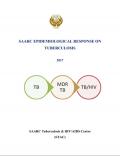
Resource | Publications,
This is the fifteenth Report on Tuberculosis (TB) situation of SAARC Region which is being published by SAARC Tuberculosis and HIV/AIDS Centre (STAC) in a series that started in 2003, which includes a compilation of regional and country-specific achievements, challenges and plans. The main purpose of the report is to provide a comprehensive and up-to-date assessment of the TB epidemic and progress made in TB care and control at Global, SAARC Region and Member States level.
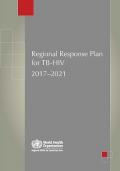
Resource | Tools,
People living with HIV are 29 times (26–31) more likely to develop tuberculosis (TB) disease compared with people without HIV and living in the same country. TB is a leading cause of hospitalization and death among adults and children living with HIV, accounting for one in five HIV-related deaths globally.
This Regional Response Plan for TB-HIV 2017–2021 is a product of wide consultation with national and regional partners. It is intended to provide strategic directions to countries on prioritizing interventions and setting reasonable targets. It will guide how interventions can be further expanded and made efficient by strengthening health systems,
and improving coordination and synergy to ensure universal access and equity.





